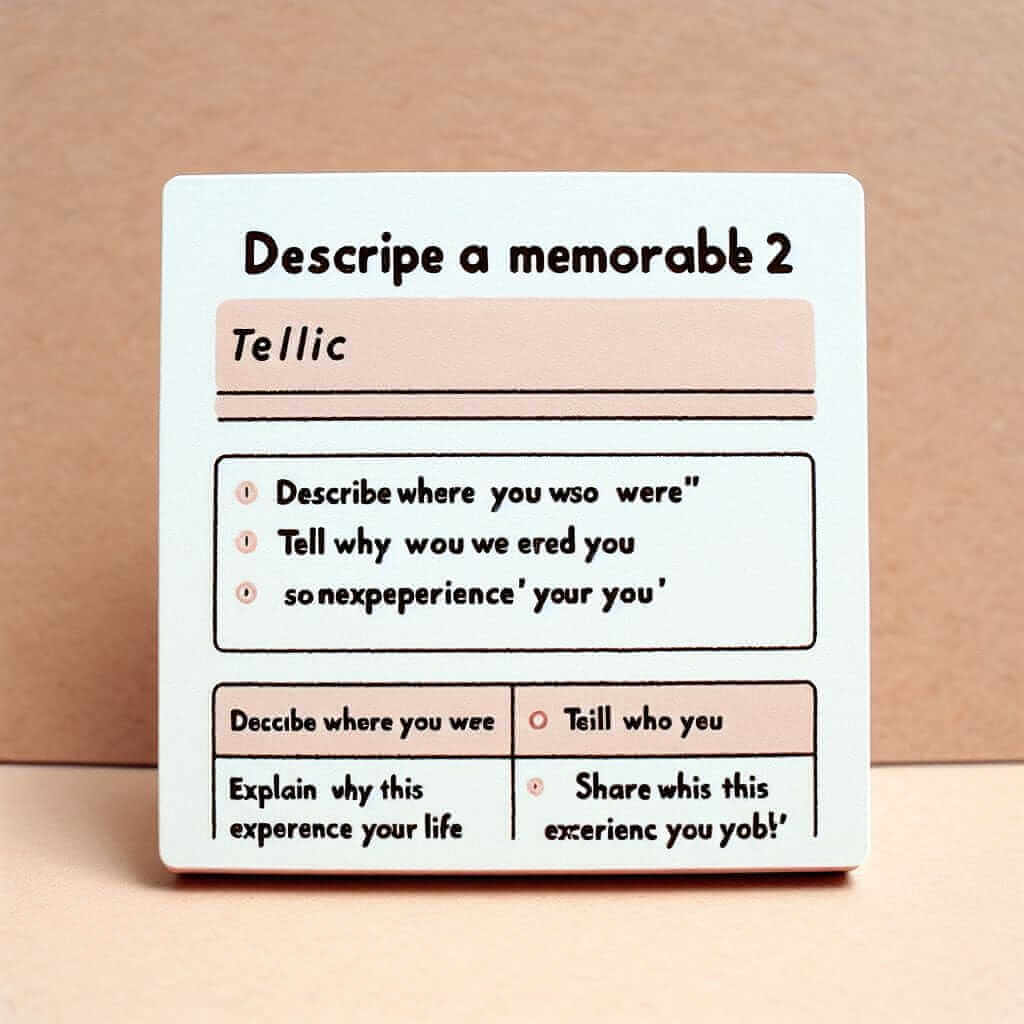The IELTS Speaking test can be nerve-wracking, especially Part 2 where you’re tasked with delivering a solo speech. Understanding the format, however, can significantly ease anxiety and boost your confidence. This comprehensive guide will delve deep into the IELTS Speaking Part 2 format, providing you with the knowledge and strategies to ace this section.
Deconstructing the IELTS Speaking Part 2
This section, often referred to as the “Long Turn,” requires you to speak individually for 1-2 minutes on a given topic. The examiner will hand you a cue card outlining the topic and including prompts to guide your talk. You then have one minute to prepare your thoughts and jot down notes, followed by a two-minute speaking window. The examiner might ask one or two rounding-off questions at the end.

Illustrative Examples
Let’s examine some example cue cards to understand the format better:
Example 1:
Describe a time you received good news.
- You should say:
- What the news was
- How you received the news
- Who you were with
- And explain why this was good news for you.
Example 2:
Describe a website you use regularly.
- You should say:
- What the website is
- How often you use it
- What you use it for
- And explain why you find this website useful.
Applying Knowledge to the IELTS Exam
Understanding the format is the first step; the next is knowing how to apply this knowledge during your test:
- Analyze the Cue Card: During your one-minute preparation, carefully dissect the cue card. Identify the keywords (like “good news” or “website”) and the specific points you need to cover.
- Structure Your Response: Use the prompts as a framework for your speech. A logical structure could be: Introduction, Point 1, Point 2, Point 3, Conclusion.
- Utilize Your Notes: Don’t treat your notes as a script. Instead, use them as reminders for key points or vocabulary you want to incorporate.
- Mind the Time: Practice speaking for 1-2 minutes beforehand. This will help you gauge how much information you can comfortably cover within the time limit.
Common Pitfalls and How to Avoid Them
- Memorizing Answers: IELTS examiners are trained to identify memorized responses. Focus on fluency and natural speech, even if it means making minor grammatical errors.
- Ignoring the Prompts: Not addressing all the prompts on the cue card can negatively impact your score. Ensure you answer every point comprehensively.
- Stalling or Hesitating Excessively: While a few pauses are natural, excessive hesitation can indicate a lack of fluency. Use phrases like “Let me see,” or “Where was I?” to buy yourself time to think.
Effective Preparation Strategies
- Practice Regularly: Familiarize yourself with a wide range of topics by practicing speaking responses to various IELTS Speaking Part 2 questions.
- Record Yourself: This helps identify areas for improvement, whether it’s pronunciation, grammar, or fluency.
- Expand Your Vocabulary: A rich vocabulary can significantly enhance your speaking score. Learn synonyms and practice using topic-specific vocabulary.
Conclusion
Mastering the IELTS Speaking Part 2 format is achievable with dedicated effort and strategic practice. By understanding the structure, utilizing the provided prompts, and honing your speaking skills, you can confidently tackle this section and achieve your desired band score. Remember, practice makes perfect – or as close to it as we can get!